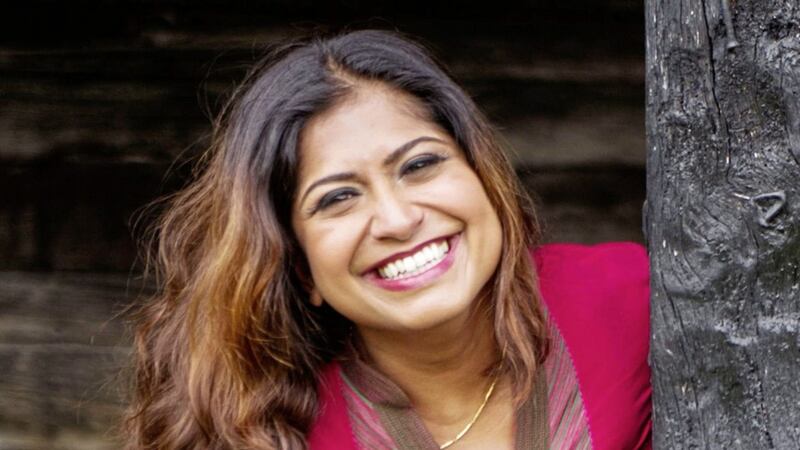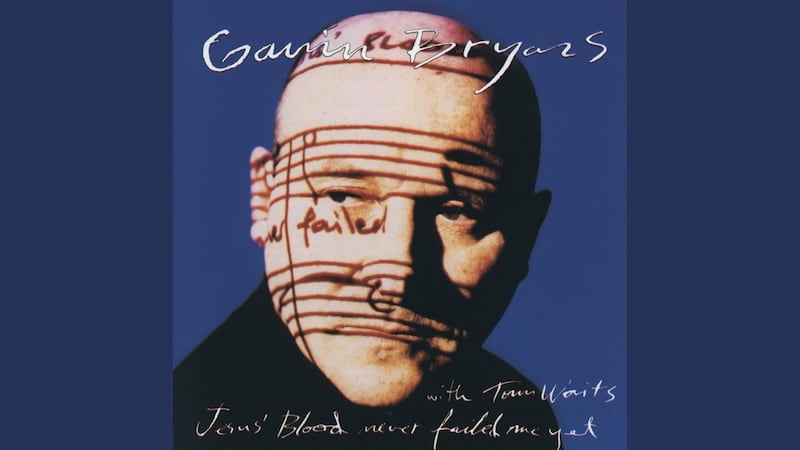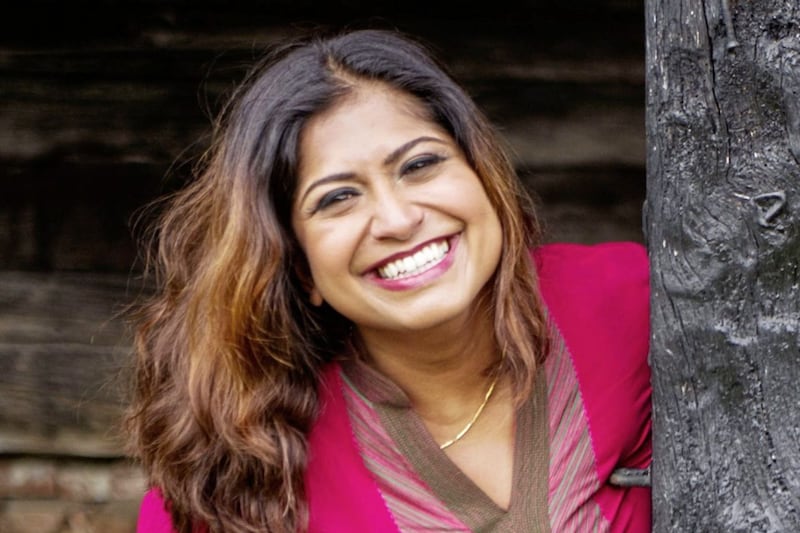WHEN Saira Hamilton talks about Bangladesh, it makes no sense that it's not more of a travel destination, because if you're seeking beauty, culture and good food, apparently it's abuzz with all three.
"A lot of people go to [neighbouring] India," says Hamilton, "but Bangladesh looks different, it feels different. Visually, it's much more like Thailand, it's very lush and green and jungly."
And while mega-city capital Dhaka is a rush of colour, throbbing with people and the crush of traffic ("I go mad for shopping when I get there, lots of saris and lovely textiles"), if you venture out into the countryside, the city hum subsides, and it's like "nothing's changed, ever since I was a kid", says Hamilton.
Although she grew up in Britain, Hamilton and her family spent their summer holidays in her father's home village, where the landscape floods every year, leaving behind fertile land for paddy fields. "It's incredibly peaceful. You have these wonderful vistas of water and palm trees and very low-rise buildings, it's very beautiful," she says. "I feel really privileged that I got to spend so much time there."
Her memories, and the gratitude threaded through them, mingle with Hamilton's love of cooking. That's why she has steadily been bringing Bangladeshi food to a wider audience since becoming a MasterChef finalist in 2013, when she impressed judges John Torode and Gregg Wallace with recipes and spicing from her heritage.
"I grew up around really good food – my mum was a great cook, my dad was a great eater," says Hamilton, and her new cookbook, My Bangladesh Kitchen, reflects a desire to write "a comprehensive collection of what Bangladeshi food is".
"I wanted to show people what was different about it," she says. "Indian cuisine sometimes gets all lumped together, but the sub-continent is as big as the whole of Europe. It's like trying to talk about Norwegian cuisine as the same as Greek."
For those entirely new to Bangladeshi cuisine, seafood is a staple – Bangladesh has a huge coastline – particularly prawns, as well as lentils, rice and lots of vegetables. Hamilton calls it a "light and bright palette of flavours", where things are cooked speedily to keep their crunchiness and colour. "It's not really rich and heavy and covered in sauce."
Store cupboard essentials include the likes of panch phoran, or Bengali five spice, a "fragrant and aromatic" blend of whole fennel, cumin, mustard, nigella and fenugreek seeds.
Then there's heat: "You're probably going to get through a lot of chillies," says Hamilton with a laugh, recommending you stock up on little green hot ones.
In Bangladeshi cooking though, instead of being chopped, they tend to be chucked into curries whole. "It keeps it much fresher, it infuses the flavour as well as the heat," she explains. "[You get a] gentle flavour, rather than really, really hot chilli – unless you mistakenly eat one."
There's a way of cooking, but there's also a way of eating, that is central to Bangladesh's "culture of hospitality".
"[You have] lots of different things on your plate at the same time, you don't have masses of anything," she says of Bangladeshi buffet etiquette. "You'd have a bit of fried fish, a bit of the curry, always some kind of chutney, salad, and always little slices of lime or shallots on the side, to zhuzh things up."
In the book, she covers the gamut of Bangladeshi eating, from food suitable for a Wednesday-night family supper (vegetable, rice, dal), to celebration dishes you'd see at a Bangladeshi wedding (biryanis, lamb rezala, Bengali 'roast' chicken), and snacky street-foody bits too.
"There's a lot of outdoor eating," says Hamilton, describing grabbing a samosa and eating puris ("Like a savoury doughnut") from newspaper parcels stapled in the corners. "That's super-duper Bengali."
Aside from writing a food column in her local paper and running food demos and catering (smallaubergine.com), Hamilton is also a senior strategy advisor for Defra, and still, of course, watches MasterChef.
"I love it. I particularly like the amateur one because the opportunities that it gives you are just amazing. I would never have dreamed of doing the things I did. Working in professional kitchens, having input and classes from some of the best chefs in the country, and the world in fact, was just wonderful," she recalls.
:: My Bangladesh Kitchen: Recipes And food memories From A Family Table by Saira Hamilton, photography by Ian Garlick, is published by Lorenz Books, priced £20. Below are two recipes from the book for you to try.
KING PRAWN CURRY WITH TOMATO AND CHILLI
(Serves 4)
2tbsp vegetable oil
1 onion, chopped into 1cm dice
2 garlic cloves, finely sliced
1tsp chilli powder
1tsp ground cumin
1tsp ground coriander
1/2tsp ground turmeric
1/2tsp salt
2tbsp ginger paste
200g fresh tomatoes, roughly chopped
1tsp sugar
4 fresh green chillies, cut in half lengthwise
600g large king prawns, peeled and de-veined (defrosted weight)
3tbsp finely chopped fresh coriander
Method:
Place a large frying pan, skillet or wok onto a medium-high heat. Add the vegetable oil and when it is hot, add the chopped onion. Fry, stirring regularly, for around 10 minutes until the onion is a deep golden-brown colour. Then add the sliced garlic and fry for a further two minutes.
Now add the ground spices, salt and ginger paste. Add a small amount of water (120ml) and stir everything together. Once the water has mostly evaporated and there is a sheen of oil on top of the pan, you can add the chopped tomatoes, sugar and fresh chillies.
Stir everything together really well and allow to come up to a gentle simmer. Then cover the pan and allow the sauce to simmer for around 10 minutes.
The next step is to add the prawns, which should be cleaned and ready to cook. (If you are using frozen prawns, make sure they are thoroughly defrosted before you start to cook.) The sauce at this stage should have thickened slightly. Add the prawns to the pan and stir well to coat them in the spiced tomato sauce. Cover the pan again and let them cook for around five minutes. If the pan is not simmering well, you may need to increase the heat slightly.
After five minutes, uncover the pan and turn the prawns. Add in half the chopped fresh coriander and stir well and then cook, uncovered, for a further two to three minutes, or as long as it takes until the prawns are completely cooked, firm to the touch and opaque all the way through. The sauce should be quite thick and cling to the prawns.
Finally, garnish with the remaining fresh coriander and some extra green chillies if wanted. This curry is delicious with plain steamed rice or with freshly made luchi (puffy, deep fried Bengali bread).
SPICY BEEF AND RICE BIRYANI
(Serves 4-6)
750g lean braising or rump steak, cut into 1cm cubes
325g Basmati rice
2tbsp vegetable oil
2tbsp ghee
3 onions, 2 finely sliced and 1 cut into 1cm dice
4 x 5cm pieces of cassia bark, or 1 cinnamon stick
4 green cardamom pods
4 cloves
6 hot fresh green chillies, cut in half lengthwise
2 bay leaves
2tsp chilli powder
2tsp ground cumin
1tsp ground coriander
1tsp garam masala
1tsp paprika
1tsp salt
1tbsp garlic paste
1tbsp ginger paste
250ml + 500ml water
Method:
Place the rice in a large bowl and wash it by swirling the rice around thoroughly in plenty of water, before carefully pouring away the cloudy water. Repeat this process three times. Then cover the rice with more fresh water and let it soak for 20 minutes.
Meanwhile, take a large saucepan or casserole dish and place over a medium-high heat. Add in one tablespoon of the oil and one tablespoon of the ghee and then add in the sliced onions. Keeping the heat quite high, but stirring frequently, fry the onions until they are a dark golden-brown colour and quite crispy (this is called beresta). This should take around 15 minutes. Once they are done, remove with a slotted spoon and set aside until later.
Without washing or wiping the pan, add in the remaining oil and ghee and then add the third, diced onion. Cook the onion for seven to eight minutes until golden-brown in colour and fully softened. Then add the cassia, cardamoms, cloves, green chillies and bay leaves. Stir the spices around for 30 seconds or so.
Add all the ground spices and salt, garlic and ginger pastes, and the 250ml of water; stir everything together well. Keep the heat up high and stir for another three to four minutes until the spice mix comes together and thickens into a paste with a sheen of oil on the top of the pan.
Add the cubed beef and stir in well. Once the pan is bubbling again, reduce the heat to a low simmer and then cover. Cook the beef for 10 minutes with the lid on. Remove the lid and increase the heat a little to boil off some of the excess liquid. Cook for another five minutes.
Drain the soaked rice and then add the grains into the pan. Stir together well then add in more water, about 500ml. Stir again and keep the heat quite high until the water starts to bubble.Reduce to a simmer, cover and allow to cook for another 25 minutes. Turn off the heat.
Finally, stir through the crispy onions you prepared earlier, re-cover the pan and allow to sit and steam for another 10 minutes to ensure the rice is fluffy. Serve.



